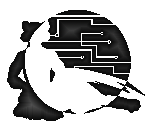Felitaur Site
Offerings
|
|
Command Line UNIX
Lecture Overview Index | Linux SysAdmin Homepage
| Overview |
Goals for this Topic:
- Understand the structure of the UNIX command line
- Explain the four basic parts of an Operating System
- Be able to define the Shell and it's purpose
- Learn some basic commands
- Command Line editing, history and TAB completion
The following programs/files/directories will be discussed for this
topic:
- passwd
- date
- who
- who am i
- exit
- history
- ! (bang operator)
- ^c
- ^d
- ^l
|
| Questions |
- What is an operating system?
- What are the four basic parts of an OS
and what do they do?
- What is a shell? What is a GUI?
- What types of shells are there?
- What is our default shell?
- What is the difference between a shell prompt and the command line?
- what does the up arrow do?
- How do you edit a previous command?
- What is Tab completion?
- What is meant by "case sensitive" in UNIX?
- What are options? What must be the FIRST thing you type on the command
line?
|
| Activities & Assignments |
- Practice tab completion. try to get to my cgibin directory by
- cd /h (hit tab to find home)
- you now have cd /home/ (hit tab twice) you should see philw among the choices
- Type p and hit tab
- You should now have cd /home/philw
- If you hit enter, you will be IN my home directory, but ls will give you a
"permission denied" error"
- (If nothing pops up, hit tab twice, this will give you the
list of things that start with that letter (say p for example) and you may
have to type one or two more letters before tab will complete it for you)
- type ls -l and then using tab completion, put in the following path:
/usr/src/kernels/[ tab twice and choose one of the kernels installed]/scripts/selinux/ and then hit enter to see what is in that directory
|
| Resources |
- List of Linux
Commands from linux in a nutshell online.
- Another good list of Linux Command line
Note: Categories are listed in menu on left under "Commands by Argument
- A good discussion of why you would use a
Command Line instead of a GUI
|
|
|


